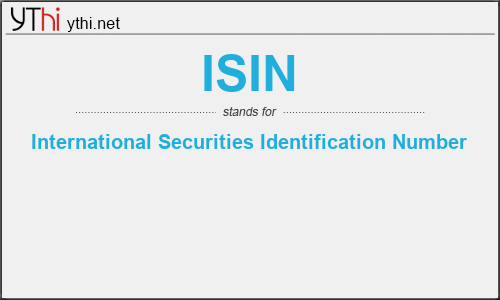What does ISIN mean? What is the full form of ISIN?
The full form of ISIN is International Securities Identification Number.
An International Securities Identification Number (ISIN) is a code that uniquely identifies a specific securities issue. The organization that allocates ISINs in any particular country is the country’s respective National Numbering Agency (NNA).
An ISIN is often confused with a ticker symbol, which identifies the stock at the exchange level. For example, according to ISIN Organization, IBM common stock is traded on close to 25 trading exchanges and platforms, and its stock has a different ticker symbol depending on where it is traded. However, IBM stock has only one ISIN for each security.1 The ISIN code identifies the securities, but it is the only common securities identification number that is universally recognized. ISINs are used for numerous reasons including clearing and settlement.
KEY TAKEAWAYS
- An ISIN is a code that uniquely identifies a specific securities issue.
- The numbers are allocated by a country’s respective national numbering agency (NNA).
- An ISIN is not the same as the ticker symbol, which identifies the stock at the exchange level. The ISIN is a number assigned to a security that is universally recognizable.
- ISINs are used for numerous reasons including clearing and settlement. The numbers ensure a consistent format so that holdings of institutional investors can be tracked consistent across markets worldwide.
All internationally traded securities issuers are urged to use the ISIN numbering scheme, which is now the accepted standard by virtually all countries. The United States and Canada primarily use a similar scheme known as a CUSIP number.2 3
ISIN codes have a total of 12 characters consisting of both letters and numbers. These include the country in which the issuing company is headquartered (first two digits), along with a number specific to the security (middle nine digits), and a final character, which acts as a check. An example of an ISIN number for a US company’s stock certificate could look like this: US-000402625-0 (dashes incorporated for simplicity). On the other hand, a theoretical Namibian company could have an ISIN, which appears as NA-000K0VF05-4. The middle nine digits of the ISIN are computer-generated in a complex formula. These are critical in helping protect against counterfeiting and forgery.
ISIN
means
International Securities Identification Number![]()
Translate International Securities Identification Number to other language.


Leave a Reply
You must be logged in to post a comment.